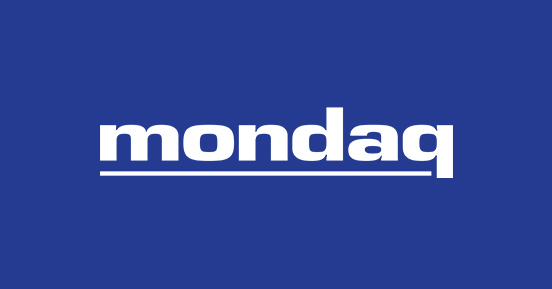
To print this article, all you need is to be registered or login on Mondaq.com.
Benchmarking—the process of screening, selecting, and
analyzing comparable companies—is time consuming. Analysts
can spend innumerable hours every year preparing transfer pricing
documentation, with a substantial portion of that time dedicated to
benchmarking. Even with improvements in the quality of databases
(which offer a vast array of quantitative and qualitative data),
the sets of potential comparables that analysts must sift through
are often enormous.
With the applications of artificial intelligence (or
“AI”) expanding by the day, it is time to start thinking
about whether AI could automate parts of the benchmarking
process.
Benchmarking Today
Today, human analysts select comparables based on a multitude of
factors, some of which cannot be reliably applied with the
“screens” built into current databases. A case in point
is the business description of a potential comparable company:
descriptions in the databases frequently lack the desired
granularity, are incorrect, or are simply missing. And business
descriptions for private companies are often completely devoid of
specific information on the companies’ functions and assumed
risks. For these reasons, analysts usually must review the
companies’ annual reports, or at least the information
presented in the companies’ websites, to perform the
benchmarking.
Parts of this process can already be automated. For example,
using Visual Basic for Applications (“VBA”), an
event-driven programming language developed by Microsoft, a
transfer pricing professional can build customized applications to
obtain a series of hyperlinks for company websites from an Excel
worksheet, open them in a browser, and copy the opened pages into a
PDF file. All that is left for the analyst to do is review the
saved pages.
Benchmarking in the Future
While such applications, without a doubt, are of immense value
to transfer pricing analysts, they are not AI. A program that would
apply AI to benchmarking would need to be able to actually
analyze the companies’ websites: it would need to
replace, at least to some extent, the task performed by the
analyst. An AI system in transfer pricing would comprehend the
information presented in the companies’ websites and make some
determination as to the comparability of this information to that
of the tested party. This would be no small feat as, quite
regularly, human analysts do not agree on the comparability of
companies.
But there is reason to believe that, at least in the future, AI
could perform these tasks. In litigation today, attorneys use AI
systems to analyze large volumes of documents. These AI systems
“score” the documents for their relevance to the subject
matter of the litigation, often with very limited input from
humans. Documents with a higher relevance score may be sent to the
attorneys for their review—or they might even be produced to
the opposing side without an attorney ever having looked at them.
It is easy to see how the same technology could be applied to
aspects of benchmarking (e.g., analyzing business
descriptions on companies’ websites).
Indeed, the real issue might not be the technology—which
is already quite advanced—but rather explaining it to taxing
authorities and courts. For instance, in applying the Comparable
Profits Method or Transactional Net Margin Method, being able to
describe and re-create the search parameters and process is just as
important as the search results themselves. How would one explain
the AI’s selection process? If the AI were a “black
box,” a judge or a wary revenue agent might not accept it.
Despite these obstacles, it is likely that AI will begin to make
inroads into the transfer pricing world in the future. And the
benefits for transfer pricing processionals could be significant.
Although AI might eliminate some routine tasks, it will also yield
time savings and allow analysts to focus their energy on the
judgmental aspects of transfer pricing that a machine won’t be
able to replace.
Visit us at
mayerbrown.com
Mayer Brown is a global legal services provider
comprising legal practices that are separate entities (the
“Mayer Brown Practices”). The Mayer Brown Practices are:
Mayer Brown LLP and Mayer Brown Europe – Brussels LLP, both
limited liability partnerships established in Illinois USA; Mayer
Brown International LLP, a limited liability partnership
incorporated in England and Wales (authorized and regulated by the
Solicitors Regulation Authority and registered in England and Wales
number OC 303359); Mayer Brown, a SELAS established in France;
Mayer Brown JSM, a Hong Kong partnership and its associated
entities in Asia; and Tauil & Chequer Advogados, a Brazilian
law partnership with which Mayer Brown is associated. “Mayer
Brown” and the Mayer Brown logo are the trademarks of the
Mayer Brown Practices in their respective
jurisdictions.
© Copyright 2020. The Mayer Brown Practices. All rights
reserved.
This
Mayer Brown article provides information and comments on legal
issues and developments of interest. The foregoing is not a
comprehensive treatment of the subject matter covered and is not
intended to provide legal advice. Readers should seek specific
legal advice before taking any action with respect to the matters
discussed herein.
POPULAR ARTICLES ON: Technology from United States
Utah Creates Data Breach Safe Harbor
Sheppard Mullin Richter & Hampton
Utah recently amended its breach notice law to provide certain defenses to companies who suffer a data breach.
Source: https://www.mondaq.com/unitedstates/new-technology/1059576/artificial-intelligence-for-benchmarking-the-wave-of-the-future